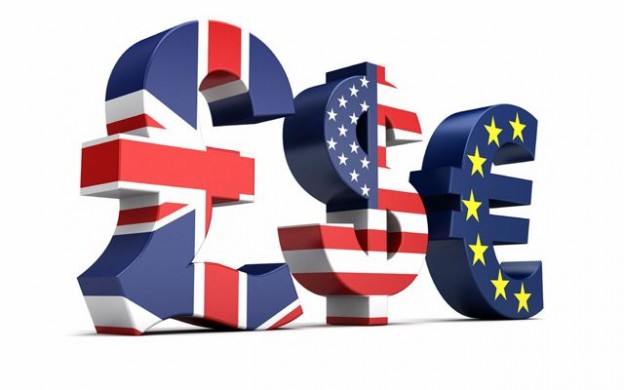Pound Sterling – At the start of the week the Pound was trading above a two-week high against the US Dollar as the UK awaited the birth of its future King. The currency found support by comments made by Prime Minister David Cameron that taxes could be cut in the near future as the UK economy improves.

To ask a currency expert a question direct, click HERE
Or to receive a FREE, NO OBLIGATION quote please click HERE
Pound Sterling Continued…………..The Pound began Wednesday’s session trading higher against the US Dollar following Tuesday’s weaker than expected US house price data. As the session continued Sterling softened against its peers as stronger than expected data was released from the Eurozone and the latest new home sales data in the USA smashed economist forecasts.
The Pound is heading for a third weekly gain against the US Dollar due to economists looking ahead to next week’s UK mortgage approval report. They are expecting it to show that new approvals have reached their highest-level in more than five- years.
US Dollar
The ‘Greenback’ traded lower against most of its peers throughout the day due to dampened expectations that the Federal Reserve will implemented tapering measures to its monetary easing programme.
Midweek the Dollar strengthened against the Pound but was little changed against the majority of peers after data showed that new home sales in the US hit a five-year high and prices soared. Sales increased by 8.3% in June to a seasonally adjusted annual rate of 497,000 units, the highest level since May 2008. In the previous month sales increased by 1.3%, compared with the same time last year sales soared by 38.1%, the largest increase since January 1992.
At the end of the week the currency extended a third-weekly decline due to speculation that the Federal Reserve will reassure investors at next week’s policy meeting that its policy will remain accommodative.
The Euro
At the start of the week the Euro edged up slightly against Sterling and the Dollar after the Bank of Spain said that it expects the embattled nation’s economy to decline by just 0.1% in the second quarter. The slowdown in Spain’s decline buoyed sentiment as investors saw the news as another sign that the Eurozone is starting to head towards recovery. Adding to the optimism were comments made by French finance Minister Pierre Moscovici who said that the country’s recession is over.
Manufacturing in Germany and the Eurozone as a whole unexpectedly returned to growth, while German services PMI expanded significantly more than forecast surging from 50.4 in June to 52.5 in July while manufacturing PMI came in at 50.3, above the 50 mark which separates growth from contraction.
On Friday the Euro remains slightly higher against Sterling following the release of data showing signs of improvement in some the Eurozone’s major economies.
Australian Dollar
At the start of the week The ‘Aussie’ gained for a third-day against the US Dollar and made modest gains against many of its other peers. The currency was supported by rising commodity prices and news that the volatility of the currency dropped to its lowest-level in over eight weeks.
Midweek the currency took a tumble against the Pound, Euro and US Dollar after Chinese manufacturing and Consumer Price index data weighed heavily upon the currency.
China is Australia’s biggest trading partner and any sign of a slowdown in the Asian economy has a negative impact on the ‘Aussie’.
On Friday the currency is heading for a second consecutive weekly gain against the US Dollar due to speculation that the Federal Reserve will maintain bond purchases that have supported higher-yielding assets.
New Zealand Dollar
On Monday the ‘Kiwi’ spent the day little changed after a 6.5 magnitude earthquake shut down the New Zealand capital. The market didn’t react negatively to the quake as damage was limited.
Tuesday it strengthened for a third-day against the Pound and the majority of its most traded peers due to the weakness of the US Dollar and a strengthening Australian Dollar.
Midweek the currency followed its Australian relation downward due to the Chinese data causing investors to seek a safe haven elsewhere. Prior to the Chinese data release the ‘Kiwi’ was trading at a one-month high after a report showed that the nation’s trade surplus widened in June.
On Thursday it surged upwards against the ‘Aussie’ and traded higher against many of its peers due to investors buying the currency on the belief that the New Zealand economy has better economic prospects than its fellow commodity based currencies.
Canadian Dollar
The ‘Loonie’ hit a one-month high against the US Dollar on Monday due to an increase in the value of Canada’s biggest export, crude oil and the reduction of expectations that the US Federal Reserve will begin to reduce its monetary easing programme anytime soon.
Midweek, the currency made positive moves against a number of its peers after the latest retail sales data came in a lot stronger than economists had forecasted. Retail sales increased by 1.9% in May the fastest pace for three years and smashing forecasts of a rise of just 0.4%.
Do you have a foreign currency requirement?
To ask a currency expert a question direct, click HERE
To receive a FREE, NO OBLIGATION quote please click HERE.
~~~~~~~~~~~~~~~~~~~~~~~~~~~
Any opinions expressed in this document are those of TorFX analysts. Any analysis and/or forecasts provided are aimed at helping clients understand market conditions and developing trends. Clients are wholly responsible for their own trading decisions.


 Hot Features
Hot Features













